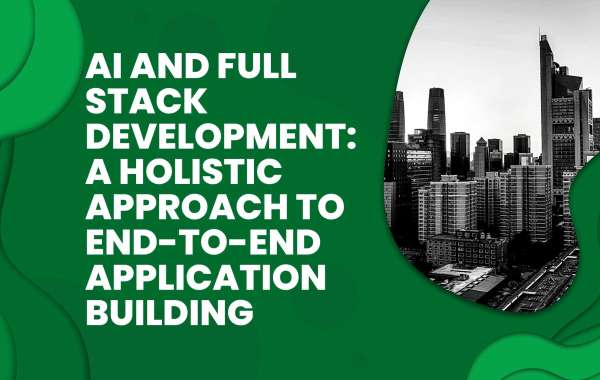The Quiet Revolution in Development You Can’t Afford to Miss
There's a quiet but profound shift happening in the way software is built. While the buzzwords swirl—AI, automation, cloud-native—developers in the trenches know that real change is less about slogans and more about tools that actually shift the workflow. Full stack development has already upended the traditional silos of front-end and back-end. Now, artificial intelligence is stepping in—not as a gimmick—but as a serious ally in building faster, better, and smarter applications. This isn’t tomorrow’s trend; it’s today’s strategic imperative.
What We Mean by “Full Stack” in 2025
Let’s be clear. Full stack development isn’t just about knowing React and Node.js anymore. It’s about understanding how to create integrated, seamless user experiences across platforms, devices, and user types. A full stack developer in today’s context is part builder, part strategist, and part problem-solver.
But here's the catch: the layers of complexity have also ballooned. Cloud infrastructure, security compliance, responsive front-ends, real-time analytics—it’s a lot. AI is becoming the connective tissue, binding disparate parts into cohesive systems.
AI Is Not the Star—It’s the Backbone
The best AI tools aren’t the ones with flashy dashboards. They’re the quiet background actors that optimize code, suggest API designs, predict server load spikes, and detect bugs before a human developer even hits ‘run.’
AI augments a full stack developer’s capabilities across the board:
Code generation using tools like GitHub Copilot
Automated testing with AI-based test case suggestions
Real-time debugging that identifies root causes using logs and past patterns
Front-end personalization based on user behavior
Smart back-end scaling that anticipates demand shifts
AI doesn’t replace talent—it makes it frictionless.
Front-End Enhanced: Intelligent Interfaces in Action
Let’s zoom into the front-end, where user perception is formed in milliseconds. Tools infused with AI are helping developers design more responsive, personalized, and accessible interfaces.
Take heatmap analytics powered by AI, for example. They’re not just showing you where users click—they’re predicting where they’re likely to engage next. AI-based A/B testing automates experiments at scale, making optimization cycles faster and smarter.
Natural language processing is quietly being integrated into interfaces, enabling voice-driven commands and chatbot-driven UX enhancements. Accessibility tools now use AI to auto-generate alt text, dynamic translations, and even color correction features for better inclusion.
Back-End Fortified: Smarter Logic, Predictive Scaling
Back-end systems, once a rigid monolith of business logic and database queries, are evolving. AI-powered microservice orchestration is a game-changer.
Imagine a backend that learns from traffic trends. Instead of reacting to overloads, AI systems predict surges and scale resources dynamically. Platforms like AWS Lambda or Azure Functions are embedding AI to auto-tune configurations.
Data management, too, is undergoing transformation. AI models help in cleaning, tagging, and normalizing incoming data streams in real-time. This creates not only efficient systems but systems that learn and adapt.
The DevOps Revolution Meets AI
Continuous Integration and Continuous Deployment (CI/CD) pipelines have become essential. But maintaining them manually? That’s yesterday’s battle.
AI-driven CI/CD tools automatically test, validate, and even rollback deployments based on predictive quality scores. Anomalies in deployment logs are flagged before they become production bugs. Infrastructure-as-Code becomes smarter, reacting to project needs instead of static templates.
For full stack developers, this means less firefighting, more building.
AI-First APIs: Not Just Smarter, but Adaptive
Application Programming Interfaces (APIs) form the communication glue between systems. With AI, they are no longer static endpoints.
Developers are now designing AI-powered APIs that adapt to the calling application’s behavior. These APIs can throttle, filter, or even modify responses based on usage patterns.
Auto-documentation is another breakthrough. AI tools now generate and maintain API documentation in real-time, ensuring it reflects actual functionality—not stale intentions. Security-wise, AI algorithms detect suspicious patterns, preventing abuse or injection attacks.
Data at the Core: From Passive to Proactive
In full stack applications, data isn’t just content—it’s insight. AI is transforming how we collect, interpret, and act on data.
Predictive analytics built into dashboards allow end-users to make decisions before issues arise. Recommendation engines, once exclusive to tech giants, are now being built into mid-scale apps by full stack developers with AI toolkits.
Data visualization libraries are integrating AI to suggest optimal chart types based on dataset and context. This is design intelligence that improves clarity, not complexity.
Automation: Scaling the Developer, Not Just the System
This is the kicker. With AI, full stack development isn’t just faster—it’s fundamentally scalable in terms of human capability. Developers no longer juggle 20 tabs to manage tasks across the stack.
Tools that summarize meetings, generate documentation, suggest refactors, and even forecast sprint velocity are enabling developers to operate at a strategic level.
We’re not talking about removing the human touch—we’re talking about removing the human bottleneck.
Ethical Engineering: The New Mandate
Yes, AI offers power, but it also demands responsibility. For full stack developers, this means considering not just “what” they build, but “how” and “why.”
Bias in AI models can creep into user-facing features. Data misuse can happen without ill intent. That’s why ethical audits, transparent design principles, and explainable AI practices are entering the full stack toolkit.
The end goal? Trustworthy applications that serve users without compromise.
Cross-Functional Collaboration, Reimagined
With AI handling much of the grunt work, human collaboration can finally shift from “just get it done” to “what’s the best way to do this?”
Product managers can simulate user flows with AI prototypes before dev even begins. QA teams can rely on AI to automate regression testing. Designers can preview accessibility flaws with AI annotations.
This isn’t about AI replacing roles. It’s about elevating them.
Case Study: A New Breed of Startups
Startups today are being built differently. The MVP isn't a duct-taped demo—it’s a smart, scalable, AI-augmented platform from day one.
Founders are using AI-driven no-code and low-code tools to validate concepts. Once validated, full stack teams step in—not to rebuild, but to enhance. They’re integrating real-time analytics, scalable cloud backends, AI-driven customer support, and adaptive UI components.
The time from concept to product-market fit has been compressed, not by cutting corners, but by cutting inefficiencies.
The Hiring Shift: What Employers Now Expect
Employers are no longer just looking for “React + Node” resumes. They’re hunting for developers who understand how to work with AI, not against it.
This means being familiar with:
Prompt engineering for code assistants
MLOps basics
Ethics in AI
Performance optimization using AI tools
Full stack developers who adapt to this AI-enhanced workflow aren’t just employable—they’re indispensable.
Learning Never Stops: Staying Sharp in the AI Era
You can’t afford to coast on last year’s stack. With AI evolving at breakneck speed, continuous learning has become a survival skill.
Luckily, the same AI revolution is making learning easier. Interactive code labs, real-time code feedback, AI-curated courses—there’s no shortage of resources.
The key is curiosity, not just competency. In a world where your tools can code, your edge is how well you use them.
Conclusion: Why This Isn’t Just a Phase
Let’s be honest: the hype around AI has been hard to ignore. But what we’re witnessing in full stack development isn’t just a passing trend. It’s a practical, tangible evolution of how digital products are built, tested, deployed, and scaled.
AI doesn’t simplify full stack development by making it easier—it does it by making it smarter. And that shift—from effort to intelligence—is what defines this moment.
For organizations looking to build end-to-end applications that are resilient, adaptive, and future-proof, partnering with providers that offer intelligent, AI-ready full stack developer services is no longer optional. It’s essential.






